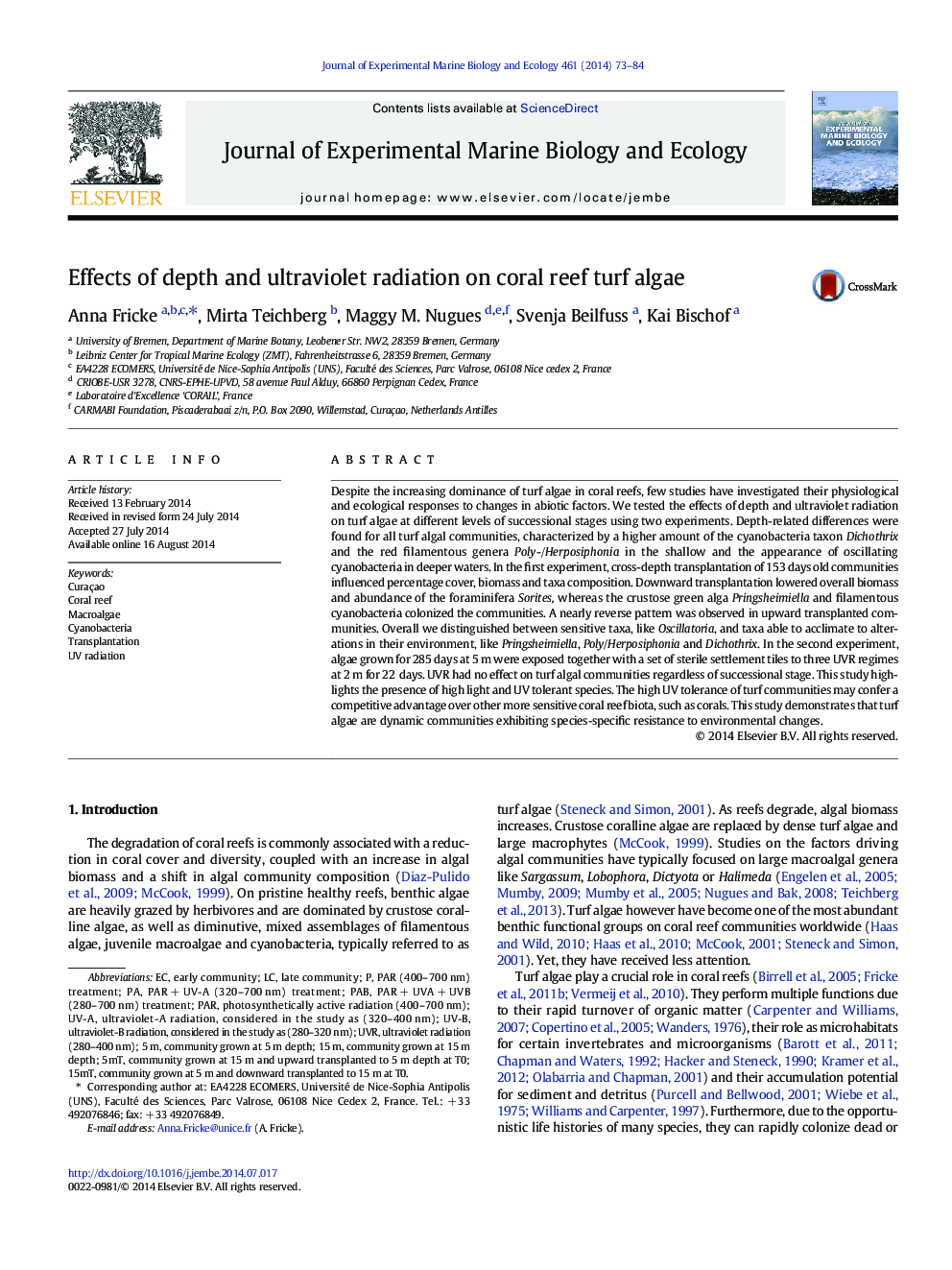| Article ID | Journal | Published Year | Pages | File Type |
|---|---|---|---|---|
| 6303910 | Journal of Experimental Marine Biology and Ecology | 2014 | 12 Pages |
â¢Composition of Caribbean turf algal communities grown in 2, 5 and 15 m water depth.â¢Depth-transplantation of turf algal communities between 5 and 15 m and 2 and 5 m.â¢Effect of elevated ambient solar light (including UV) on turf algal communities.â¢Turf algal composition and pigment content varied between exposed water depths.â¢High tolerances for turf algal communities against elevated light and UV levels.
Despite the increasing dominance of turf algae in coral reefs, few studies have investigated their physiological and ecological responses to changes in abiotic factors. We tested the effects of depth and ultraviolet radiation on turf algae at different levels of successional stages using two experiments. Depth-related differences were found for all turf algal communities, characterized by a higher amount of the cyanobacteria taxon Dichothrix and the red filamentous genera Poly-/Herposiphonia in the shallow and the appearance of oscillating cyanobacteria in deeper waters. In the first experiment, cross-depth transplantation of 153Â days old communities influenced percentage cover, biomass and taxa composition. Downward transplantation lowered overall biomass and abundance of the foraminifera Sorites, whereas the crustose green alga Pringsheimiella and filamentous cyanobacteria colonized the communities. A nearly reverse pattern was observed in upward transplanted communities. Overall we distinguished between sensitive taxa, like Oscillatoria, and taxa able to acclimate to alterations in their environment, like Pringsheimiella, Poly/Herposiphonia and Dichothrix. In the second experiment, algae grown for 285Â days at 5Â m were exposed together with a set of sterile settlement tiles to three UVR regimes at 2Â m for 22Â days. UVR had no effect on turf algal communities regardless of successional stage. This study highlights the presence of high light and UV tolerant species. The high UV tolerance of turf communities may confer a competitive advantage over other more sensitive coral reef biota, such as corals. This study demonstrates that turf algae are dynamic communities exhibiting species-specific resistance to environmental changes.
